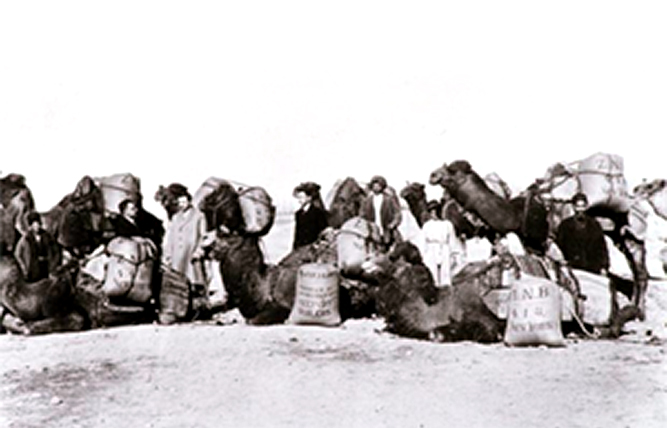History - Pistachio Origins
Pistachio trees have grown in the Middle East for thousands of years. Pistachios have always been a desired delicacy in this region. Pistachios are mentioned in the Old Testament (Genesis 43:11).
In Persia (modern day Iran), pistachio trade and ownership of pistachio groves meant riches and high status. Legend has it that pistachios were a favorite of the Queen of Sheba, who demanded all her land’s production for herself and her court. Through the conquests of Alexander the Great (334-323 BC), the nut reached Greece. Later, under the rule of the Roman Emperor Tiberius (First Century AD), the nut was also introduced into Italy and Spain.
Traded Goods between the Orient and Europe
The cultivation area of the pistachio expanded further with the spread of Islam and the resulting Arab expansion. Alongside the Crusades, the Levant trade in the Middle Ages was also widespread. The Venetian Republic, in particular, had close trade ties with Syria, one of the main cultivation areas for the pistachio. The goods reached northern and central Italy via the sea trade routes.


Pistachios Cross
the Alps
the Alps
North of the Alps, the pistachio remained unknown for a long time. Upon reaching central Europe, it was called the “Latin Penny Nut” because of its introduction from the Italian sales route, over the Alpine passes.
While the pistachio was used early on, in various ways for cooking in Italy, north of the Alps it was used primarily as an expensive addition to baked goods. Only after World War II did the pistachio image gradually change from an expensive baking additive to a popular snack.
The Historical Development of American Pistachios
During the 1880s, imported pistachios were popular in the USA, especially with Middle Eastern immigrants. The pistachio received further distribution through vending machines installed in underground train stations, bars, restaurants and other common locations. “A dozen for a nickel” soon developed into a familiar slogan.

In Search of the Perfect Pistachio for AmericaIt was recognized that California’s Central Valley – due to its fertile soil, hot, dry climate and moderately cold winters – offered the ideal growing conditions for the nut. In 1929, American botanist, William E. Whitehouse, journeyed to Persia (modern day Iran) to collect pistachios. This pursuit came to a close in 1930, when he returned to the USA with a collection of approximately 20 pounds (10 kilograms) of individually selected nuts. Within a year, the first test plots had been planted. However, pistachio trees take seven to ten years to mature, so it was almost a decade before Whitehouse knew what he had gathered. Of all the nuts Whitehouse collected, only one proved useful. Unfortunately, he never saw the tree from which it originated. He had picked the nut out of a pile of drying nuts in the orchards of the Agah family, who were prominent pistachio growers at Rafsanjan, in Iran’s central plateau. Whitehouse named the tree “Kerman” after the famous carpet-making city near Rafsanjan. Scientists propagated and strengthened the Kerman by budding it to heartier rootstock varieties. After many years of experimenting, the concept of the American pistachio industry was becoming a reality. Word of the new crop spread, and plantings emerged throughout California in the 1960s and later in Arizona and New Mexico. Yet, many facets of the new crop remained a challenge to these adventurous Americans. Pistachios are wind pollinated, as opposed to bee pollinated. Just one male tree is required to pollinate up to 30 female trees. |
Commercial Cultivation of American Pistachios
The story of the U.S. pistachio industry has been one with unparalleled success. From its first commercial crop of 1.5 million pounds (680 tons), in 1976 to the record 2016 crop of over 900 million pounds (408,233 metric tons), success has built upon success. This increase in total crop has been mirrored by increasing production per acre, from 1,468 pounds per acre, in 1982, to over 3,806 pounds per acre in 2010. Consequently, the industry has gone from barely providing for the domestic market to exporting the majority of its production to countries all over the world.


The American Pistachio Industry Today
Today, the states of California, Arizona and New Mexico represent 100 percent of the U.S. commercial pistachio production. California comprises 99 percent of the total, with over 312,000 acres planted throughout 22 counties. There are 950 producers in the United States, and the annual “farm gate value”* of pistachios represents more than $1.6 billion to the California economy and more than $16 million to the states of Arizona and New Mexico.









